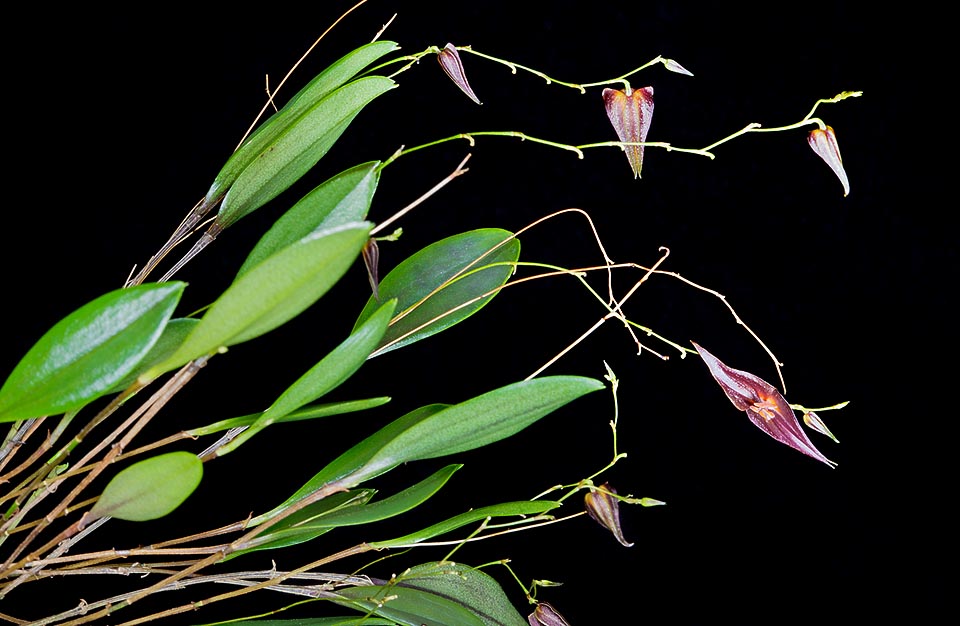Family : Orchidaceae

Text © Pietro Puccio

English translation by Mario Beltramini

Lepanthes elegantula is a small Ecuador epiphyte with short rhizome and thin stems, 5-8 cm tall, provided at the apex of a 2-5 cm leaf. Racemose inflorescences, up to about 15 cm long, with filiform rachis and 10-20 flowers opening gradually. Among the most known of genus due to the easy cultivation and almost continuous blooming © Giuseppe Mazza
The etymology of the generic name has not been specified by the author, after some is the combination of the Greek substantives “λεπίς” (lepis) = scale and “άνθος” (anthos) = flower, with reference to the shape of the flower of many species.

Lanceolate sepals with pointed apex, about 1,5 cm long and 0,7 cm broad © G. Mazza
The specific name is the diminutive of the Latin adjective “elegans, antis” = elegant.
The Lepanthes elegantula Schltr. (1915) is an epiphytic species of small size with short rhizome and thin stems, 5-8 cm tall, provided at the apex of an erect obovate-elliptic leaf with tridentate apex, 2-5 cm long and 1-1,2 cm broad, coriaceous, of intense green colour.
Racemose inflorescences, up to about 15 cm long, with filiform rachis bearing 10-20 flowers, that open in succession for long time, with burgundy red sepals and petals and labellum of reddish orange colour.
Lanceolate sepals with pointed apex, about 1,5 cm long and 0,7 cm broad, the dorsal merged at the base to the lateral sepals, in their turn united except at the apex.
Transversally bilobed petals broader than long, about 2 mm long, with upper ovate lobe and oblong lower one, and bipartite labellum 1,7 mm long.
It reproduces by seed, in vitro, and by division, with each section provided of at least 3-4 stems.
Miniature orchid among the most cultivated of the genus due to the relatively large flowers, the almost continuous blooming and the easy cultivation, requires a shady exposition, medium temperatures, high and constant ambient humidity and good ventilation. The waterings must be regular and abundant so to keep the substratum constantly humid, but without stagnations, utilizing rain water, by reverse osmosis or demineralized.
Fertilizations every two weeks from spring to autumn utilizing preferably a balanced hydrosoluble prodct, with microelements, at ¼ the dosage shown on the producer’s instructions. It can be mounted on trunks, bark or rafts of cork or of roots of arborescent ferns covered by a layer of sphagnum, or cultivated in pots or baskets with draining compost formed by medium sliced fragments of bark and of charcoal with addition of spagnum.
Transplants and repottings are to be done, when necessary, at the vegetative restart.
The species is reported in the appendix II of CITES (species whose trade is internationally ruled).
→ For general notions about ORCHIDACEAE please click here.
